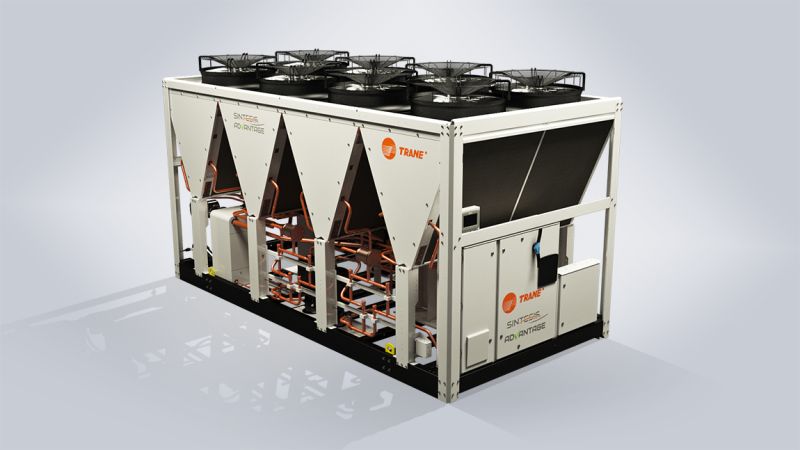
Challenge
For optimal collaboration with Delft University of Technology, Haskoning wanted to establish the new office on the university campus, in the old Mining Faculty building.
This national monument from 1912 had to be thoroughly renovated. The aim was to make the building 'Paris-proof', i.e. to meet the requirements of the Paris climate agreement that apply to offices from 2050.
This means that the annual energy consumption must be lower than 70 kWh/m². That includes laptops, coffee machines, etc. Quite a challenge, because as a Mining Faculty there was an annual consumption of about 350 kWh/m².
'Paris proof' is not easy in new construction and difficult in renovation. With a national monument, the challenge becomes very big. There is little room for manoeuvre due to its monumental status.
Wouter Steenvoorden of Haskoning: "This monument was an ‘energy leak’, designed with oil boiler heating and ventilation by opening the windows. But that also made it a great challenge. You have to think differently. But if you want to, you can do it!"
Solution
The building was cleverly insulated and a heat and cold storage system was installed in combination with heat pumps.
A roof construction was designed for the two courtyards of the 8-shaped building. The canopy created two atria. For example, there were fewer outer walls (and therefore less heat loss), the building became large enough for the approximately 1000 employees and space was created for a restaurant, among other things. The canopies were covered with solar panels. Because of the monumental status, they were not allowed on the existing roof.
Two Trane CXAF air-to-water heat pumps were also installed on the new canopy. Two Trane City RTSF water-to-water heat pumps were installed in the basement.
Wouter Steenvoorden: "The building had gas boilers that sent water up to 90 °C to the cast-iron radiators. The new heat pump system is designed for 50 °C supply water. Unfortunately, we had to replace the existing radiators because of asbestos."The building was not ventilated. Therefore, a mechanical ventilation system with heat recovery was installed with AL-KO air handling units. By placing these AHU’s centrally in the atria, shorter routes and smaller pipe diameters were possible. In new 'climate islands', which leave the monumental ceilings visible, other modern office technology has also been concealed. In addition to heat, the climate islands also provide cooling.
The low-temperature water-to-water heat pumps account for about 50% of the heating capacity. The air-to-water heat pumps on the roof cover the other 50% as a peak supply. All delivery systems are connected to the heat pumps. The water-to-water heat pumps cover demand 90% of the time, which means that a very good energy efficiency is achieved. For example, the air-to-water heat pumps kick in when it is very cold outside, less than 5 °C.
Results
Haskoning's new energy-efficient office was put into use in May 2025. It is gas-free, 'Paris proof' and the energy consumption is no less than 80% lower than before the renovation. What also helps is that the building works demand-driven, with presence detection.
Wouter Steenvoorden of Haskoning: "During the renovation, we aimed for energy label A+++. Quite an achievement for a national monument from 1912. But after realization, we even ended up with energy label A++++!"More information about this sustainability project
Learn more about AT-4 air handling units



